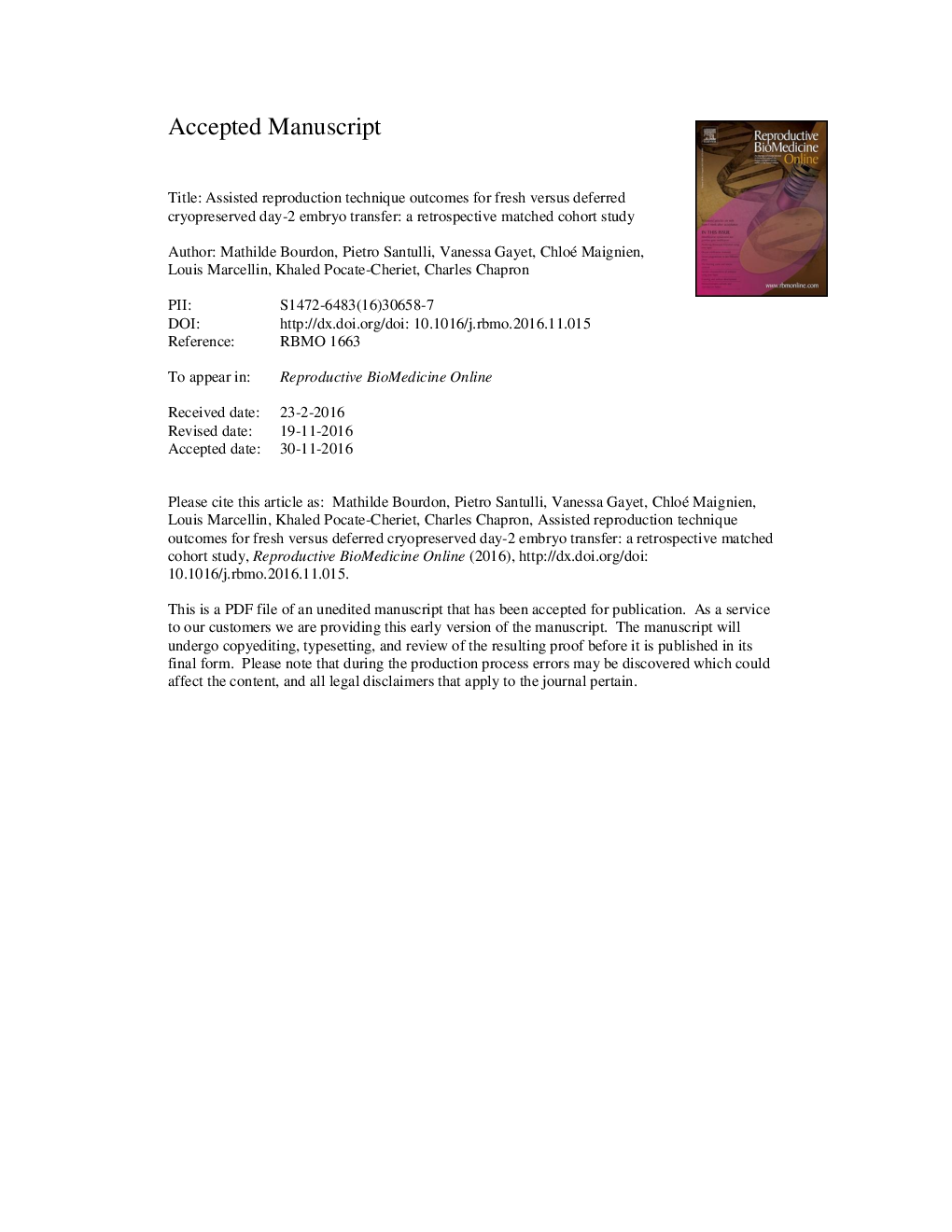| Article ID | Journal | Published Year | Pages | File Type |
|---|---|---|---|---|
| 5696704 | Reproductive BioMedicine Online | 2017 | 31 Pages |
Abstract
Ovarian stimulation could adversely affect endometrial receptivity and consequently embryo implantation. One emerging strategy is the 'freeze-all' approach. Most studies have focused on blastocyst transfers, with limited research on day-2 deferred cryopreserved embryo transfers. In this large retrospective cohort study, outcomes were compared between day-2 fresh versus deferred cryopreserved embryo transfers. After matching by age and number of previous cycles, 325 cycles were included in the fresh group and 325 in the deferred cryopreserved embryo transfers group: no significant differences were found between groups in implantation (0.20 ± 0.33 versus 0.17 ± 0.31, respectively) and ongoing pregnancy rates (21.85% versus 18.46%). Independent predictors for ongoing pregnancy after a multiple logistic regression analysis were the women's age (OR = 0.92; 95% CI 0.88 to 0.97), body mass index (OR = 0.94; 95% CI 0.89 to 0.99), the number of two pronuclei embryos (OR = 1.19; 95% CI 1.04 to 1.40) and at least one grade 1 embryo transferred (OR = 1.97; 95% CI 1.26 to 3.05). In the case of a day-2 embryo transfer, outcomes after treatment with assisted reproduction techniques are similar for fresh versus deferred cryopreserved embryo transfers when pre-transfer progesterone exposures are similar in the two groups.
Related Topics
Health Sciences
Medicine and Dentistry
Obstetrics, Gynecology and Women's Health
Authors
Mathilde Bourdon, Pietro Santulli, Vanessa Gayet, Chloé Maignien, Louis Marcellin, Khaled Pocate-Cheriet, Charles Chapron,
